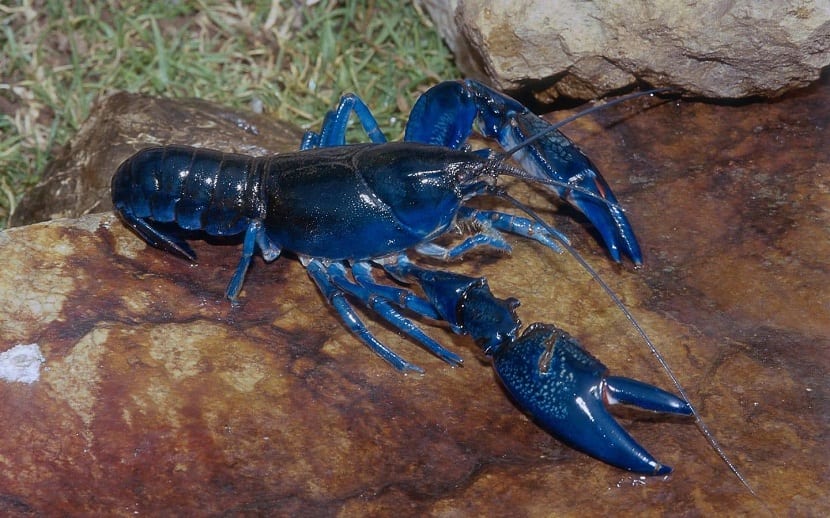
Today we are going to talk about the blue lobster. It is a crustacean that belongs to the Parastacidae family. Its scientific name is Cherax cainii. It is quite well known in the world of crustaceans, so we are going to dedicate the entire post to it.
Here you will be able to know the characteristics, feeding, reproduction and other information about the blue lobster.
Key features
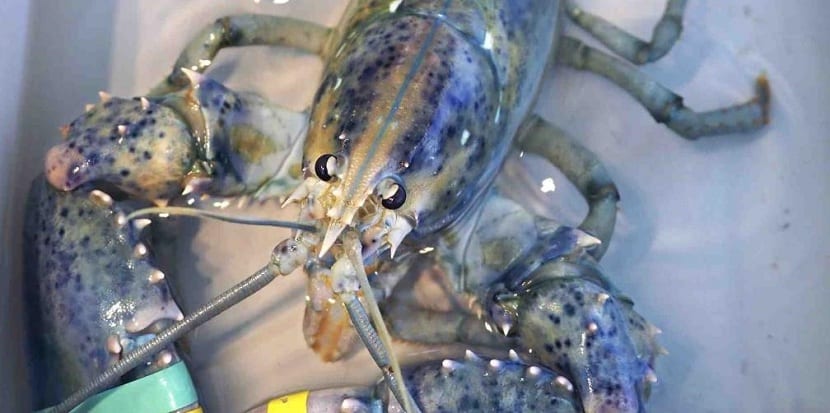
The body of the blue lobster is divided into two parts. On the one hand, the abdomen is the area where the tail is and, on the other hand, the cephalothorax, where the thorax and head are. It is covered by a shell that provides protection to the internal organs. His face ends in a pointed shape. We can highlight from his head the eyes, which have a prominent shape. His vision, despite what it may appear from his eyes, is very poor. For this reason, you need to use your long beforehand to be able to feel the surface and to know which areas you can move correctly.
As for the antennae, their tip is totally sharp and sharp. It also has sensitive anténules that it uses to have touch and taste. By using these sensory techniques you can locate the food and know the areas through which it can move well. They are able to appreciate quality water by measuring temperature, salinity and pH among other things.
The lower part of the lobster stands out for having five pairs of legs. The first two are those with the tweezers or chelas. He usually uses them to defend himself and attack. The second and third pair of legs are small forceps that it uses to handle food. The last two pairs of legs are smaller and can be considered normal. He uses them to have better support and to be able to move easily.
As for its abdomen, it is called the pleon and it is divided into several mobile segments. In each segment it has small fins that end in a very small laminar segment. This fragment is called a telson. It also has pleopods that it uses for swimming in its ventral area.
Description
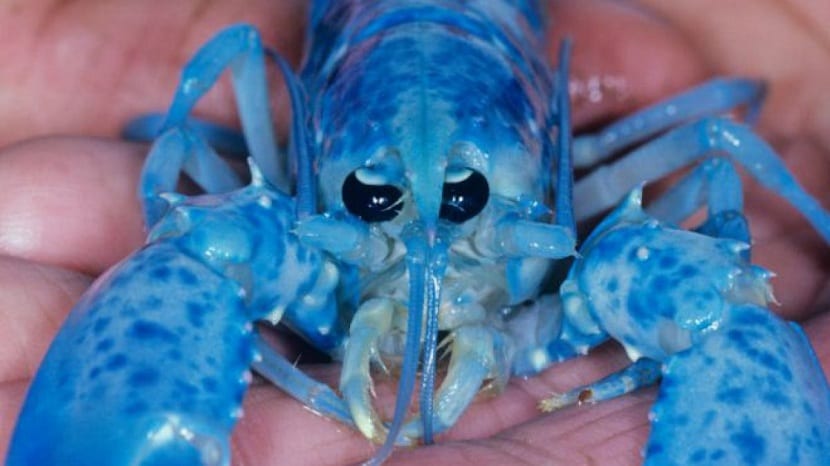
They are usually of a larger size, reaching 25 cm in length. An average blue lobster weighs about 500 grams. This makes it one of the largest freshwater lobsters. Approximately 25% of its body weight is in the tail, making it the part of its body that has the most culinary interest. Its meat is of great value and is enjoyed in exquisite lobster delicacies.
Unlike other species of lobster, this specimen has a blue body and varies between light, brown, gray, yellow and reddish tones. Depending on the species you are treating, there may be a color scheme. Along its body it can show small dots of both white and yellow color.
The males have the claws with two red spots as in the part of the pleon. This characteristics is what makes it possible to differentiate between males and females. The intensity of the color depends entirely on the sex of the individual, age and health. The larger it is in size, the darker it will be.
Behavior of the blue lobster
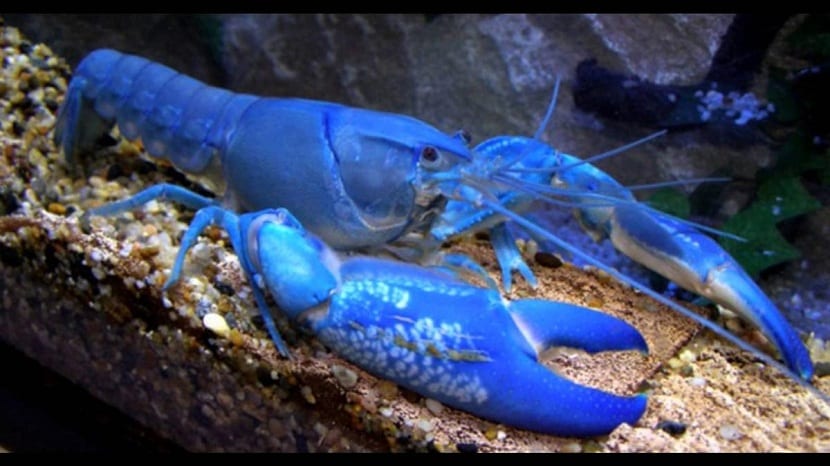
The natural environment of this crustacean is the rivers. The rivers in which it is found tend to decrease their flow at certain times of the year to such an extent that they even dry up. In order to alleviate this situation, the blue lobster meets its other companions in the wells of water that are still available.
If the dryness of the river leaves it in the open and does not have time to reach the available water wells, what it does is dig a deep hole in the mud to bury itself and wait for the new rains to widen the river. When the new rains fall again, the lobster can rise to the surface. It is capable of surviving up to one year in periods of one year.
They tend to prefer rocky bottoms found in the middle and lower reaches of rivers. They can also be seen living in swamps where there are deeper pools and have holes to hide between the rocks.
It is one of the least aggressive crustaceans in the marine world. They coexist perfectly with other fish of a similar size to them and even larger. Although it is peaceful, it can hunt and destroy the shells of other slow animals such as snails. It is most active at night. During the days they spend resting protected in their lair.
Its average life expectancy is usually one year, although specimens of up to 3 years have been seen.
Food
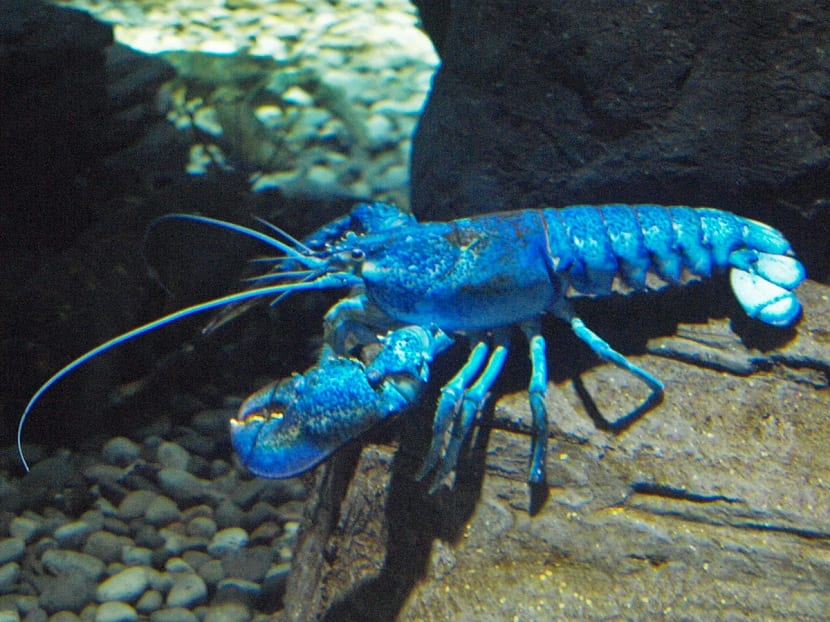
Let's move on to feeding the blue lobster. It is based on decomposing plant materials found at the bottom of rivers. You can eat small vegetables and fish that are not rotting.
When you eat decomposing food you also eat the bacteria and fungi that are associated with it and they are very nutritious and high in protein. It has a digestive system capable of digesting meat and vegetables. Eat from fruit seeds to small fish and pass by.
Reproduction of the blue lobster
The blue lobster reproduces up to 4 times in a year. It has the characteristics of rapid growth from the beginning of its birth. Once the male and female have copulated, the female uses fine hairs that are on the fringes of the pleopods. With this you can hold the eggs while they grow. The eggs are located in the sixth segment of the abdomen where a fan shape can be seen.
In each laying it is capable of storing between 200 and 1000 eggs, depending on the size of the female. The larger the female, the more eggs she should lay, although this also depends on age. As you get older, the number of eggs you lay decreases.
I hope that with this information you can learn more about the blue lobster and its way of life.